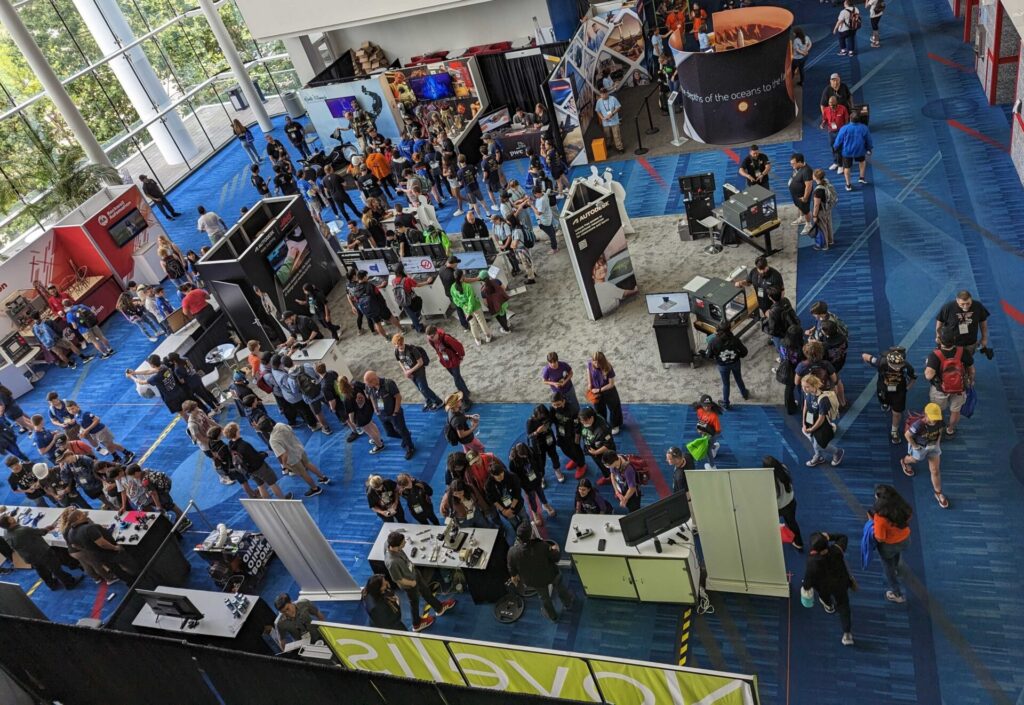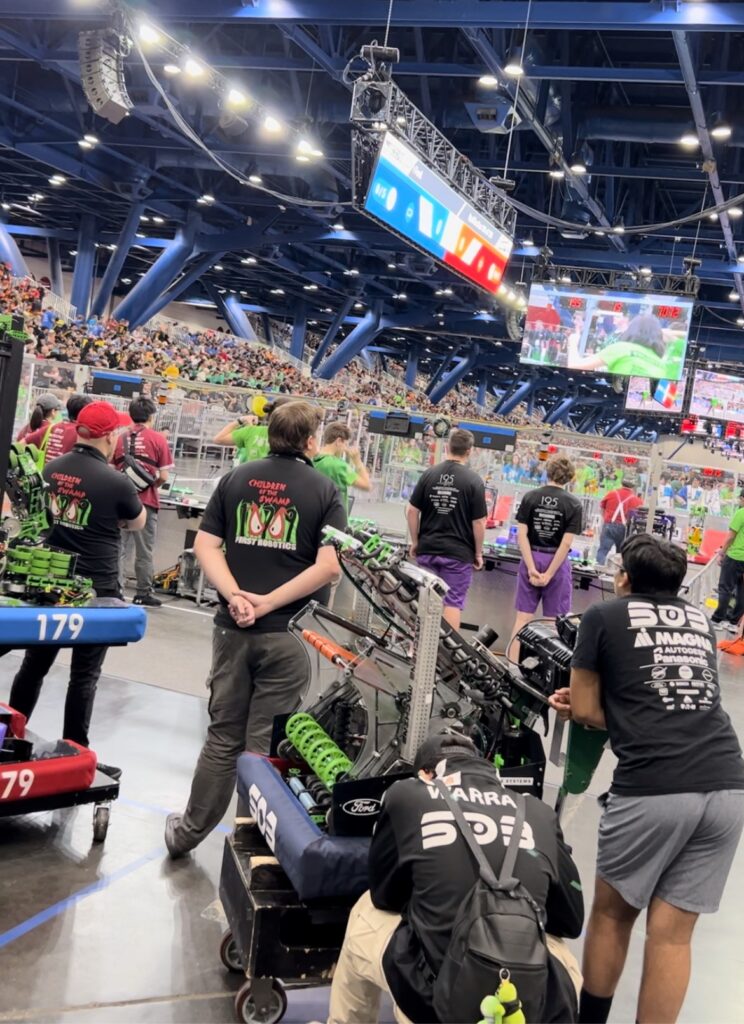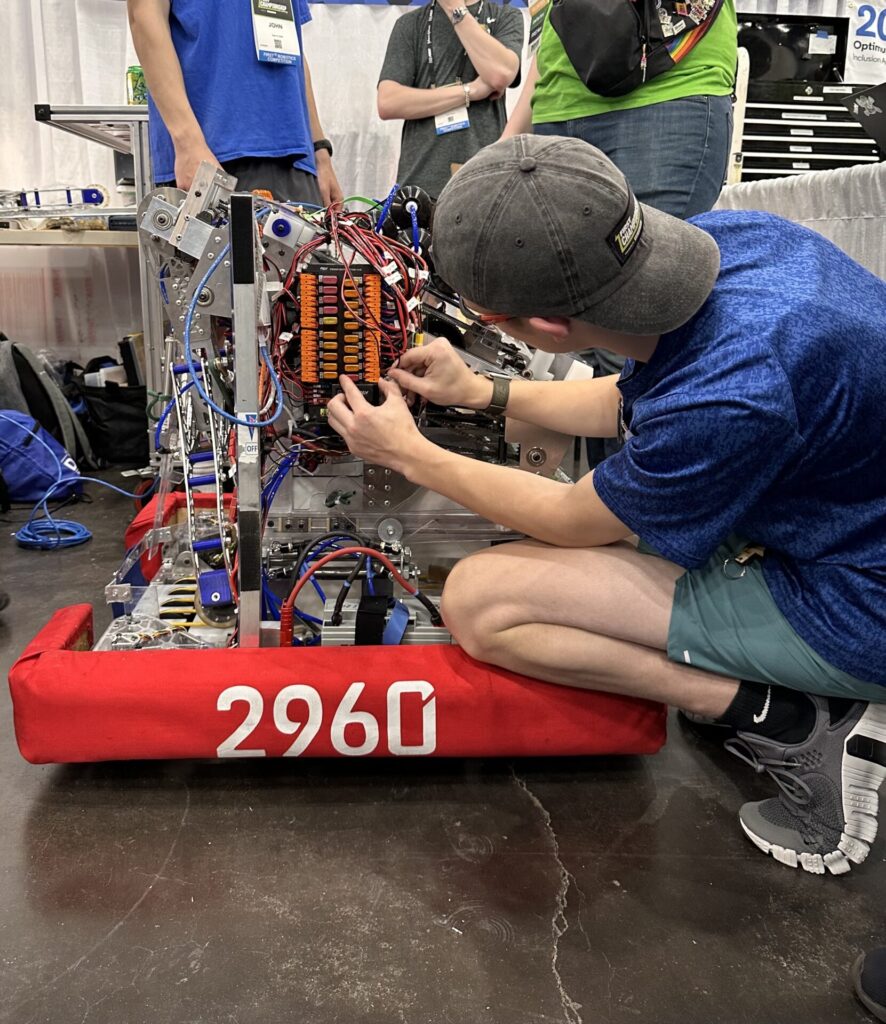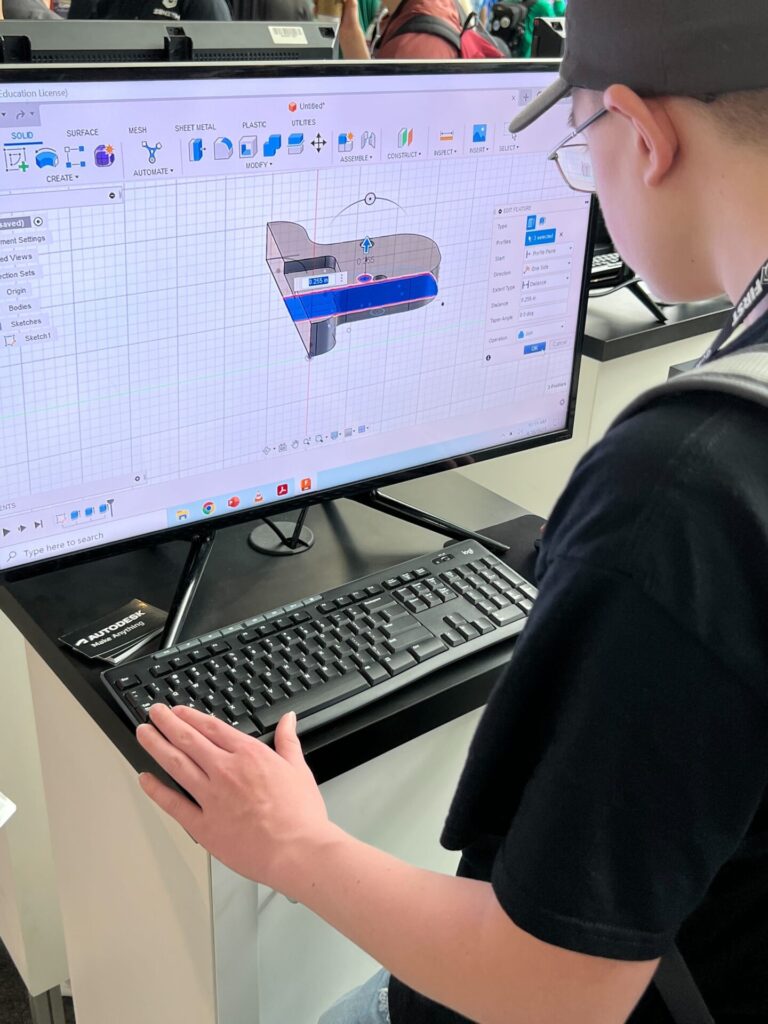
At the April 2023 FIRST Championship in Houston, Texas, international teams of high school students faced off in the FIRST Robotics Competition, which combines the excitement of sports with the rigors of STEM learning and skills. The contest draws students of all skill levels—both technical and non-technical—who work on not only building industrial-sized robots that play field games with other student teams, but also learn to fundraise and design a team “brand.”

Working on such goals with a team of colleagues imparts valuable skills for designing and making robots that are in high demand in industries from manufacturing and motorsports to healthcare and beyond, as well as necessary soft skills like data analytics, co-worker collaboration, and creative thinking and problem-solving. Careers in robotics and automation present some of the most promising opportunities for students now and should only flourish more in the near future. The World Economic Forum’s recent Future of Jobs Report 2023 listed robotics engineers in the top 10 jobs expected to grow the fastest from now until 2027. And research results from ASME (American Society of Mechanical Engineers) and Autodesk show that 72% of the industry believes human-robotic interaction will increase.
Knowing how to build and control robots will be important to employers as part of an overall aptitude for advanced manufacturing that includes working with cobotics, advanced 3D printers, artificial intelligence, and multi-axis production machines. Events like the FIRST Robotics Competition work like a well-rounded industry primer—as well as a fun experience—for students.
For example, if a team wanted to build a drone that could carry a camera but still be light enough to fly a certain distance on a charge, it could use CAD software to design the parts, AI-driven generative design to optimize the parts for both low weight and physical strength, and CAM software to send the parts to a 3D printer. Before finishing, the team could render 3D models that show the drone’s final design, run computer simulations to see how the drone would work in real situations, and create animations that demonstrate the drone’s movements. Autodesk Fusion 360 brings all those software capabilities into a single design, simulation, manufacturing, and collaboration platform.

“Fusion 360 has been very helpful for us to create parts, as we lack a lot of tools that a more-financed or bigger team may have,” says Josie Thornton, whose Melbourne Robocats team competed at FIRST Robotics 2023. “Having a way to create products without actually having to build them by hand has been incredibly helpful.”
Students need these professional tools to begin their journey of discovery and innovation, so both students and teachers get free educational access to Fusion 360’s advanced design and make potential, as well as other Autodesk products. The cloud-connected platform is built for easy collaboration with people—like FIRST Robotics teammates—whether in-person or remote.

“We use Fusion 360’s cloud storage to enable our teammates to work remotely,” says Thomas Cormley, a CAD lead and captain for a 2023 FIRST Robotics Competition team. “Fusion 360’s powerful modeling tools allow us to quickly iterate on design ideas. Rather than drawing on napkins, we draw on our computers. This has completely revolutionized the way our team thinks about robot design and has directly led to more robot competition wins and an avenue for our team to grow both in size and in engineering capability.”
While Fusion 360 is a professional platform used worldwide, it’s also made to be easy for new users like students to get started quickly so they can enter competitions like FIRST Robotics.
“The learning curve on it is a lot simpler, especially for a student,” says Reid Eichenberg, whose Bedford Express team from Michigan used Fusion 360 for its FIRST Robotics Competition project. “You’re able to do so much, any time you want. It’s efficient.”
Head to the Autodesk Education Community for free access to Fusion 360 and get going right away with the “Learn Fusion 360 in 90 Minutes” course. It will help get you up to speed so you can begin the rewarding experience of setting up students for their future. As Lisa Ranney of the after-school program at the W.D. & Mary Baker Smith Career Center in Lafayette, Louisiana says, her favorite part about working with kids using Fusion 360 is “the joy I see on their faces when they see a finished project they have designed themselves.”